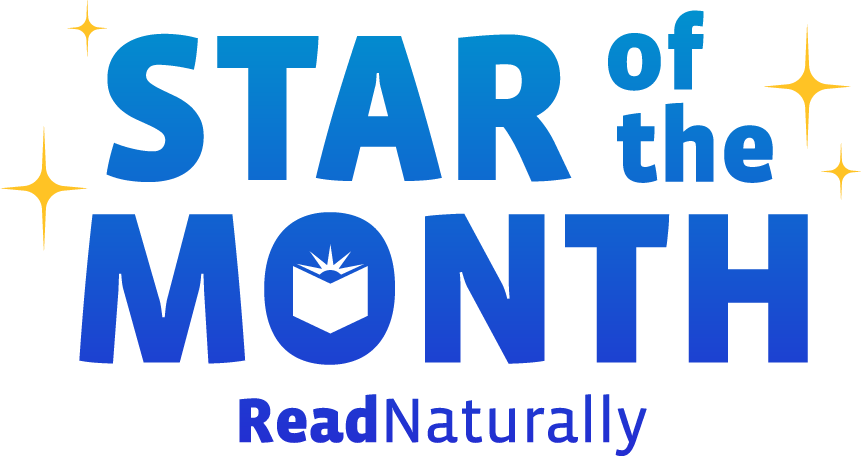Do your Read Naturally students conduct their cold timings independently? Teachers have different opinions on whether or not they should. Some teachers believe that, in order to get the most accurate data, a teacher should be present during the cold-timing step. Other teachers believe that students should do this step independently in order to practice self-correcting errors. While both points of view are valid, here is Read Naturally's views on cold timings:
Read more In elementary school, I remember participating in a reading incentive program with a simple premise: The more books I read, the more points I’d receive toward a reward. Because of the reward, my classmates and I were highly motivated to spend our free time reading. What’s not to love about a program like that?
There was just one problem. I could read a long, challenging chapter book slightly above my reading level in the same amount of time it took my classmate to read a dozen quick, easy books below his reading level. Who earned more points? My classmate. What did I learn? Quantity beats quality. Don’t challenge yourself.
The program had a fantastic mission, but there was an unintended consequence for me and many other students. Unfortunately, this kind of thing happens often in schools. The only way to avoid it is for teachers to take the time to scrutinize the practices and programs they put to use in their classrooms. Are we doing things out of habit or because others are doing them? Or are we doing things because they truly promote learning? A good educator is one who observes and adjusts—constantly and relentlessly.
Read more Some ELL students learning to read in English may need additional support in the Read Along step of Read Naturally Strategy programs. We've built this extra support into many of our levels for Spanish-speaking ELL students.
Read more Would you shop at a grocery store with a "one size fits all" theme?
Read more I was recently talking with a mother of twins who admitted that her biggest struggle was not having enough one-on-one time with each twin. I thought of classroom teachers and how they struggle with the same thing. Wouldn’t you love to spend more individual time with each of your students? Unfortunately, it’s not always possible. And yet, Read Naturally’s placement procedure requires just that. The placement assessment asks you to sit with one student at a time, sometimes for several minutes. What if you just don’t have time?
Read more Checking initial placement will help ensure optimal success. After a student completes between three and six stories, you need to check to make sure the student’s level and goal are appropriate. To make this task as straightforward as possible, our curriculum experts worked hard to put together detailed guidelines, available for free on our website.
Read more Think back to the beginning of the school year. What did your struggling readers sound like? How was their fluency and comprehension? Now think about these readers today. Do they read more confidently? Have they made significant gains?
Read more Do you have students who seem more focused on rate than overall reading improvement? It’s natural for some Read Naturally students to get caught up in the “game” of trying to read faster and faster with each timing. But as you know, fluency is about accuracy, expression, and rate, which together lead to comprehension. To pass a story, the Read Naturally Strategy requires students to meet all four of these criteria. Remind students that the ultimate goal is comprehension, not speed. If a student persists in being overly focused on rate, consider the following remedial actions:
Read more Picture yourself participating in a parent-teacher conference for one of your students. If you are a literacy specialist, a Title 1 teacher, or a special education teacher, it is always a bit awkward when the regular classroom teacher or the parent turns to you and says, “I don’t really know what Jamie does when he leaves class for reading intervention!” Even though regular classroom teachers and parents are usually involved in planning a student’s intervention, and they receive several formal reports about a student’s progress during the year, they may not necessarily be aware of what the student is doing day-to-day.
Read more Last week, I helped assemble gingerbread houses for my son’s Kindergarten class to decorate. I sat down at a table covered in empty milk cartons, graham crackers broken into various shapes, and buckets of icing. The other parent volunteers and I exchanged timid looks until the teacher met with us and showed us a fully assembled prototype. It was then that we understood what our process should be. When we saw the finished product—the goal—we could relax and get to work.
Read more  Share your student’s success story—nominate him or her for our Star of the Month award. Win a Barnes & Noble gift card for the student and a Read Naturally gift certificate for your class!
Share your student’s success story—nominate him or her for our Star of the Month award. Win a Barnes & Noble gift card for the student and a Read Naturally gift certificate for your class!